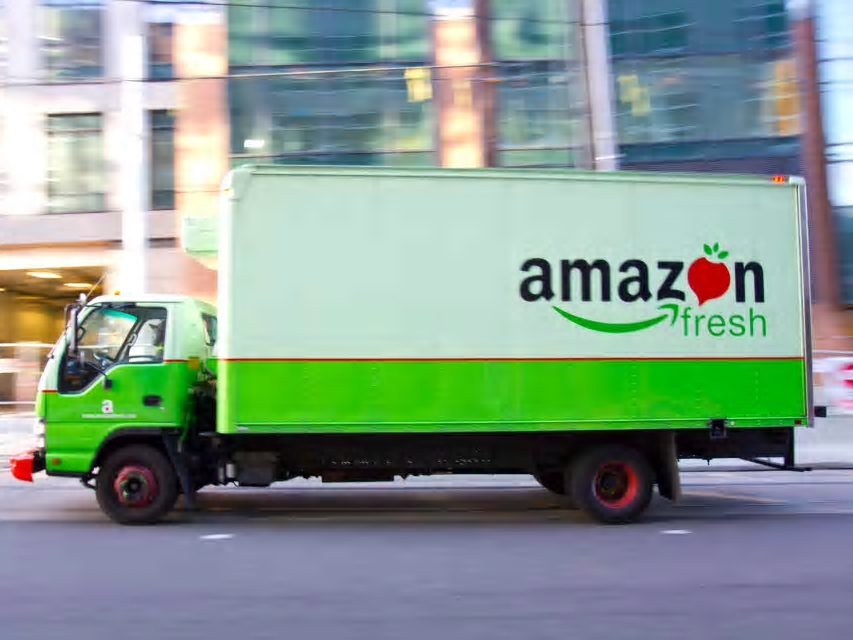Amazon buys Whole Foods, boy times, they are a changing…the courtship of digital is ending

Why would Amazon buy Whole Foods?
Ironically, the answer is in the name, Amazon. The amazon jungle is the life blood of the western hemisphere providing the ecosystem and environment to nourish over a billion in population and drives civilizations largest economies. According to Wikipedia, the Amazon represents over half of the planet's remaining rain-forests, and comprises the largest and most bio-diverse tract of tropical rain-forest in the world, with an estimated 390 billion individual trees divided into 16,000 species.
Furthermore, having worked with Amazon when they first launched, Jeff Bezos’ goal seemed to be to want to bring everything a consumer could possibly want instantaneously to any part of the globe. So, it’s not a surprise to me that Whole Foods would be part of the consideration having integrated Zappos, Audible, etc. What I like about this is that Amazon; versus Walmart or any other big etailer/retailer has an opportunity to revamp the village economy that’s been largely decimated and ignored by the chain retailers such as the Walmart’s and Kmart’s of the previous generation. What I mean is that, there will be shift to employee first and long-term strategy versus a shareholder driven short term view of profit and loss. This will help employees gain purchase power and drive the economies in their communities.
What’s the state of retail and is there any benefit for brick and mortar shopping?
Look, I don’t think we should see the world from a “zero-sum” game perspective. I’m not a retail expert but as a consumer myself, introspectively, I have seen a big shift in my own buying behavior. Looking back, I never thought I’d stop going to the produce markets to use Fresh Direct or Google Express, as an example. We also must be mindful that many of us consumers are in various transition stages. This means that there’s a role for physical spaces, the answer lies in defining your ideal customer, understanding how he/she’s purchase behavior is changing and what your business can do about. How Amazon integrates Whole Foods will shed more light into the convergence of digital and physical in real terms.
When buying preference shifts more towards medium B versus medium A, and medium A has been the driving method for businesses to entice a transaction how should a business respond?
The answer to this question is simple but the path to getting there in an organization seems to be well beyond a company’s reach. Assuming medium B is online shopping and medium A is physical retail purchasing then logic would dictate that organizations would build the necessary pathway from divesting from brick and mortar to mix shift to supporting online shopping. Yet we look across the spectrum of retail and while this isn’t new news, i.e. music stores closing due to the CD to mp3 shift or mom and pop shops disappearing due to large retail shops are just a few of the shifts that are similar in nature but every time we see a pivot in consumer behavior our career business professionals and leaders seem to miss the boat or wait too long until it’s too late.
Businesses should have a strategy to address the changes in the marketplace and these changes are clear and present when you listen to consumers. This idea isn’t new, there are many businesses who have carefully followed the needs of their customers, they have succeeded, Intel or BestBuy come to mind. While others simply ignored the signs, or didn’t see the writing on the wall and are no longer around or solvent, Kodak or Kmart, etc.
What's interesting is that, as a percentage of revenue, according to TheMotleyFool, Amazon spends more on advertising then Walmart, The Home Depot, Best Buy, Kroger, and Target combined. Do they know something we don't know? Or do they understand that part of doing business and competing requires investing into driving sales? And that this investment brings critical data and learnings that will help the business calibrate and course correct? A form of research and development in the digital era.
So how can a large retailer turn the tide through digital transformation?
That’s a loaded question, and it’s important to note that it’s not about digital or physical, really. And you've people say, it's not a sprint its marathon, I say it's a triathlon but your organization has to be sure of what it is it needs to accomplish and be laser focused on accomplishing it. Most businesses are fully on the transformation journey, the problem lies in whether it’s the right one for them. To understand that, it’s important to understand the organization’s wherewithal and capability from the vantage point of research, data, technology, legal, processes and talent. The underlying question will be whether you have the right mindset from the leadership and from the brick and mortar staff to facilitate any future change. If it's not a holistic approach then you're just slapping "lipstick on pig" and the underlying issues will engulf your business and you will cease to exist.
With regards to research, this is a crucial first step and most businesses sit on a treasure trove of information. Ultimately it will rely upon a business’ core customers, asking the right questions and knowing who they are. Why are they your customers, what are there likes and dislikes, and what drives them to consider alternative products. I think the consumer packaged goods (CPG) industry does a phenomenal job at understanding a dimension of this but what I see a lot is research fails to address the consumer journey pieces of the qualitative puzzle.
Data is another challenge for large companies, are you collecting the right data with regards to your business, end-to-end, who’s data should you use or trust, do you have a single source of truth and how is the data helping you make the right decisions or not? The research outputs should be able to allow for a gap analysis of your datasets, financial, product, marketing, sales and otherwise.
The most puzzling of blockers I’ve encountered is, technology both IT and engineering. Yes, not surprising, it took a decade for organizations to realize that a Chief Marketing Officer (CMO) was investing more in technology than a Chief Technology Officer (CTO). On top of that, you have the pressure of advertising technology and how to tie all these platforms together. Each department, sales, finance, product, marketing and IT all look at their technology investments differently yet operationally and from a cost perspective it doesn’t make sense to do so. So, you have varying levels of maturity when it comes to technology deployment and the appetite for the business side to partner with technology departments from the get go to help bridge and solve problems together. Unfortunately, this is further led by strong Chief Executive Officer and other c-level opinions hence introducing barriers to a timely and frictionless solution.
We’ve been here before, the question of whether legal is there to prevent or to protect. Many organizations are starting to look at this from both angles. Prevention is the equivalent of austerity, err on the side of caution. This mindset of course makes sense for certain business as usual situations. But what if you’re trying to address a new problem in the marketplace, a shift in consumer expectations or a new competitor entrant that’s pushing the envelope and their velocity of growth is staggeringly faster than yours? This is where I feel your legal counsel needs to be a critical partner in understanding the business requirements versus simply addressing the legalities of a decision. Furthermore, the legal team must be agile in its response to the needs of the business and market. How this is done is partnership and collaboration of course.
Processes are absolutely the linchpin to all we’ve discussed so far. To put it simply, across the organization if making a decision is a three to six-month endeavor then leadership must look at how to accelerate the process, where are the gaps, what are the key blockers and how do we move more faster. I’m shocked that many organizations are still in a waterfall mindset, very linear in their thinking and sequential. Or there are pockets of lean startup but then other departments are operating in a different way. A process change should be defined and harmonized with inputs and alignment across all cross-functional departments. This will help large businesses move and shift to market and consumer demands more efficiently.
Finally, talent, the single most important opportunity for an organization to mine. Talent development should be seen through seeding, cultivating and building the acumen, both internal and external, required to solve the challenges the business faces. Whether it's digital, internet of things, or whatever new shift your business sees in the horizon. This is whether your technology department needs calibrate and train to understand marketing, advertising and other key aspects of your business supply chain. Do you have the right mechanisms, culture and leadership to enable curiosity and avoid complacency? I’m always afraid of becoming obsolete as a professional, shouldn’t a business’ staff and agencies feel the same way? If not what can the leadership do and provide to drive that mindset and talent transformation?
Is Amazon looking at Whole Foods as a way to build and bring in new thinking and talent that is supporting a greater vision? Businessses shouldn't purchase using a one dimensional strategy, all angles, especially the impact to employees and talent are an important facet of the acquisition considertation.



